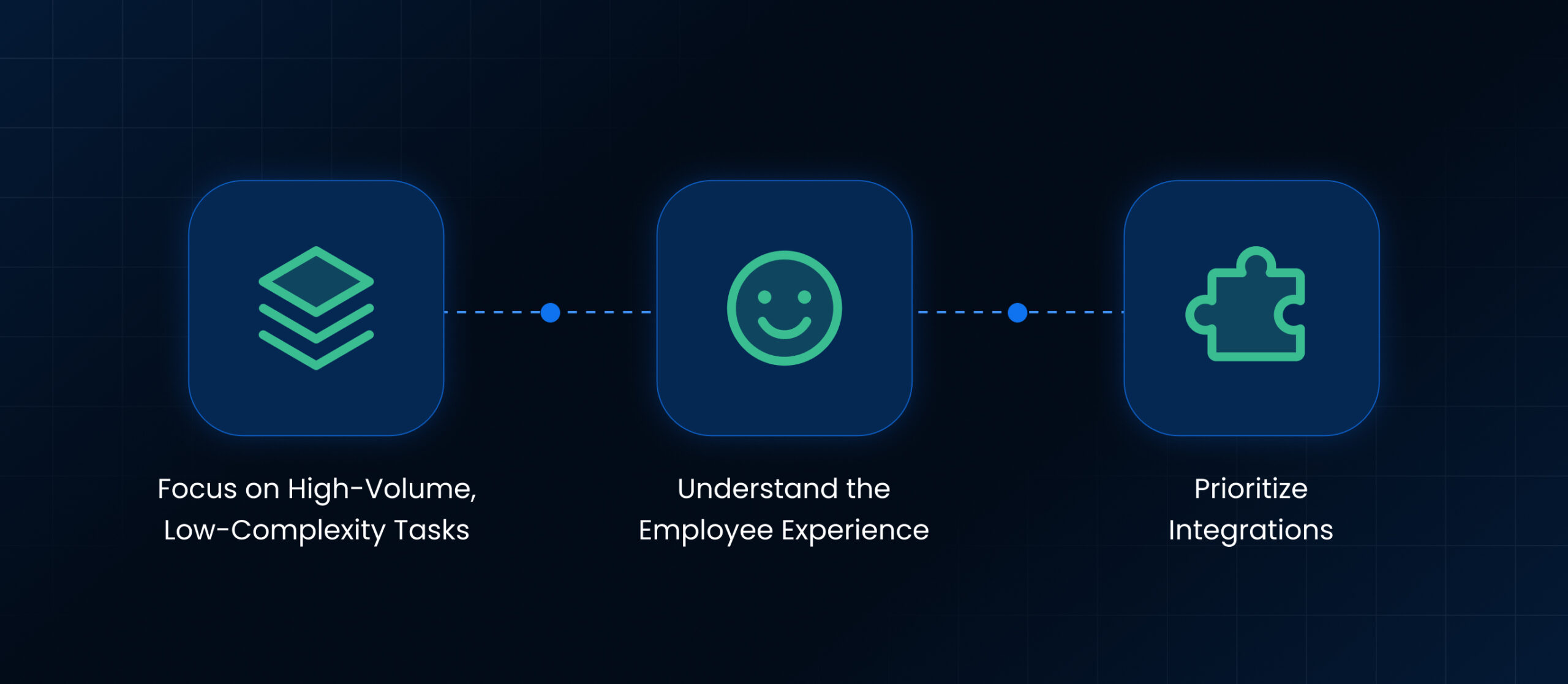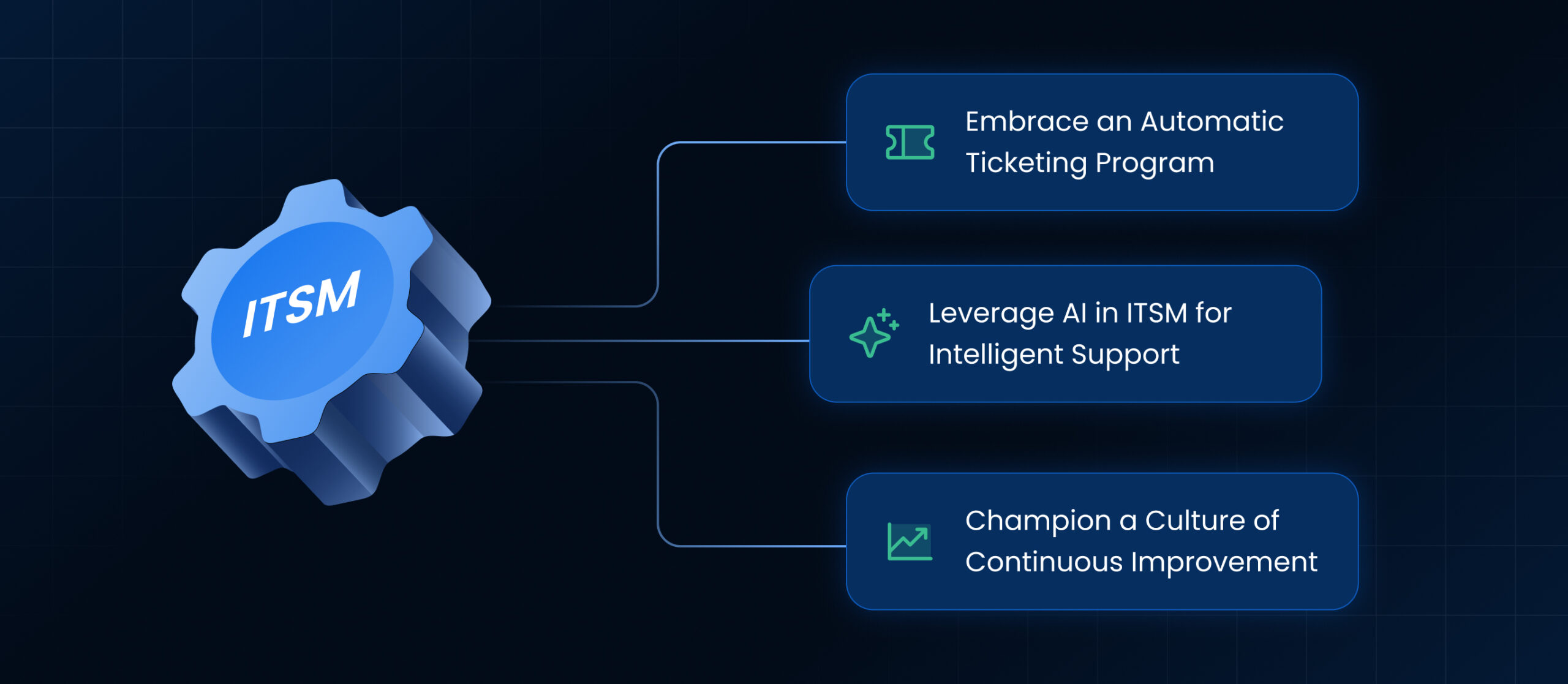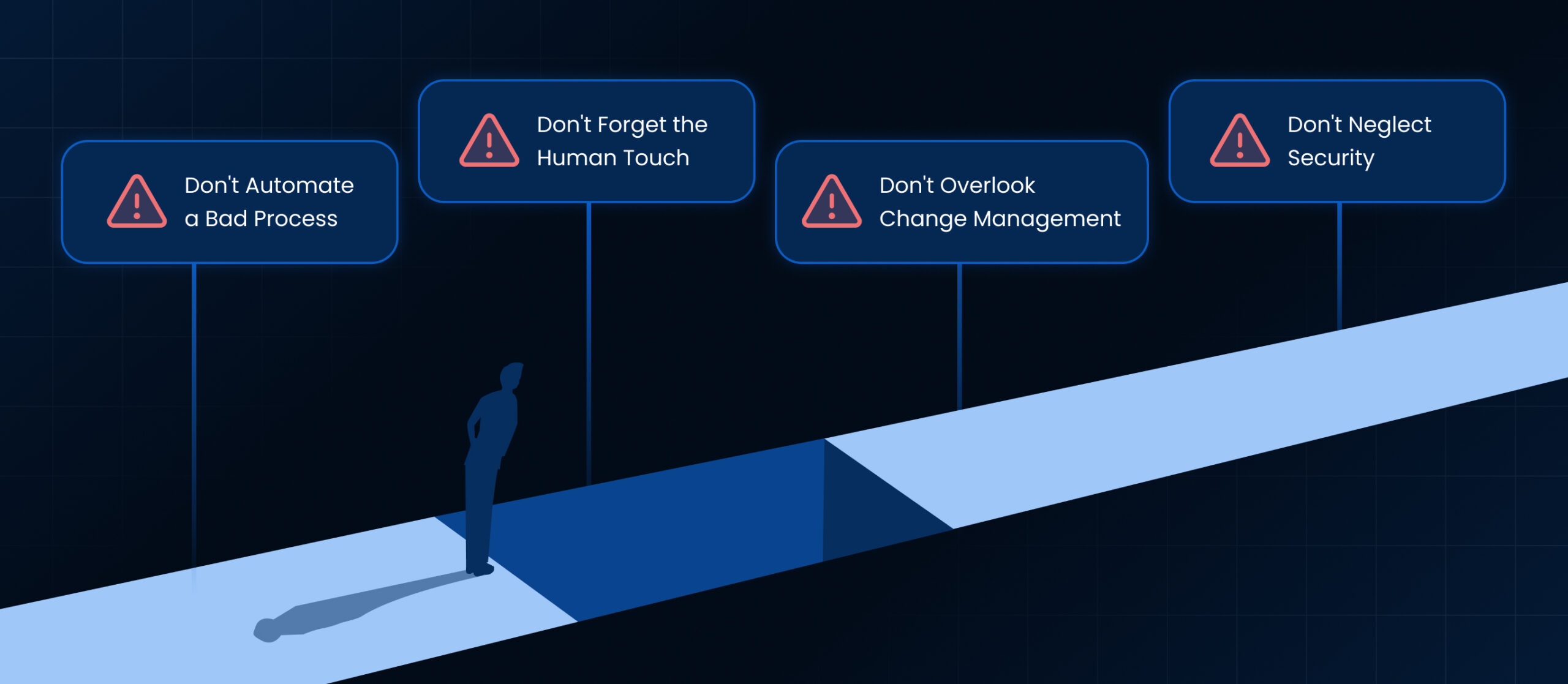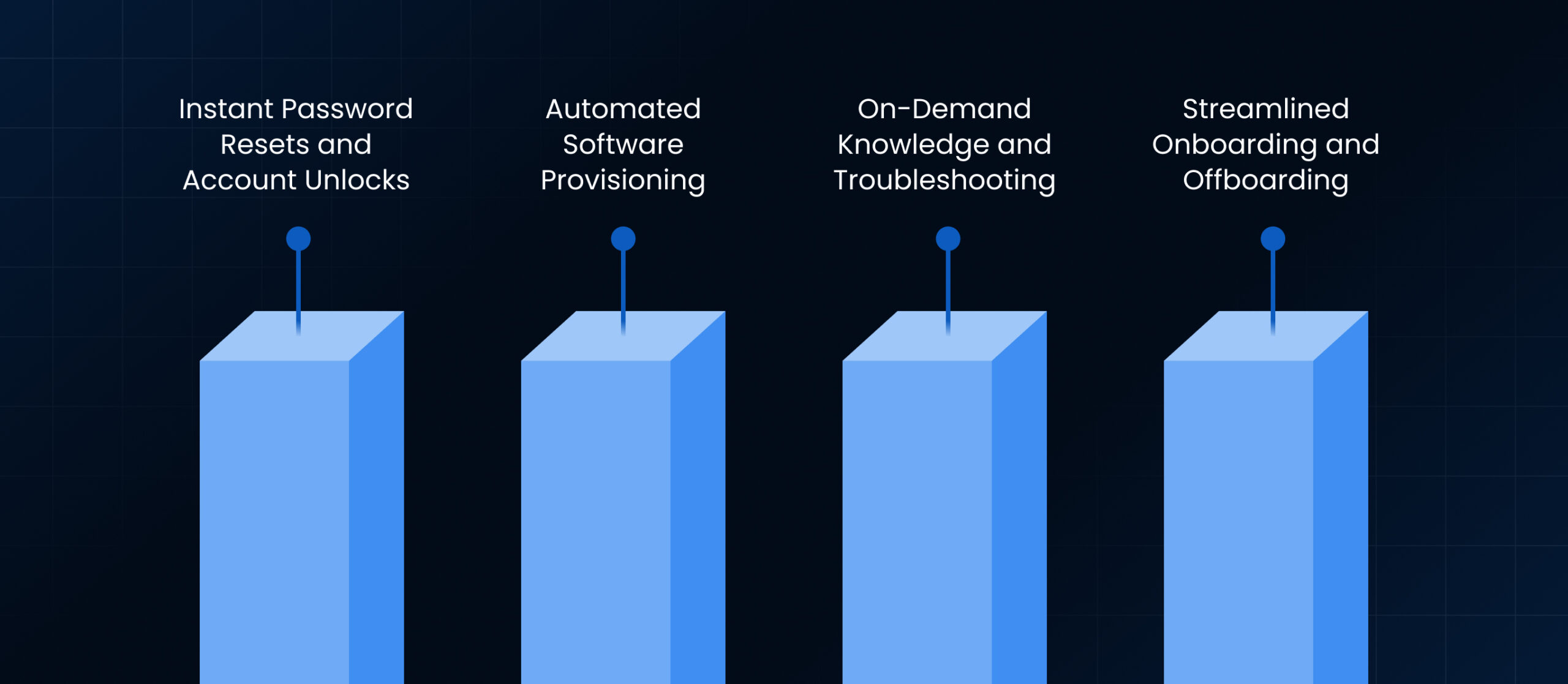Introduction
In today’s fast-paced digital landscape, the speed and efficiency of your internal operations are just as crucial as the products you deliver. For many large American enterprises, the IT Service Management (ITSM) platform, the digital backbone of employee support, is creaking under the weight of modern expectations. The traditional, manual approach to resolving IT, Finance, and HR issues is no longer just inefficient; it’s a direct drain on productivity and a drag on employee morale.
If your technology heads are constantly battling a rising tide of support tickets, it’s time to look beyond legacy systems. It’s time to embrace intelligent automation in ITSM. This isn’t about simply adding a few automated replies; it’s about fundamentally transforming how your employees interact with internal support systems, making processes seamless, and freeing up your valuable IT talent for more strategic initiatives.
The Breaking Point: Why Traditional IT Service Management Is Failing
Think of your traditional ITSM platform as a manual switchboard operator in an age of smartphones. It gets the job done, but it’s slow, prone to errors, and can’t scale to meet the demands of a modern, tech-savvy workforce. Employees today expect the same instant, intuitive experiences from their workplace technology as they get from their consumer apps. Waiting hours or even days for a simple password reset or software access request is a significant source of frustration.
This friction has a real cost. Delayed resolutions mean lost productivity as employees are unable to perform their duties. The constant back-and-forth with support agents on mundane issues also chips away at morale, leading to disengagement. For large US companies, where scale amplifies every inefficiency, these seemingly small frustrations accumulate into a substantial competitive disadvantage.
Charting Your Course: Key Aspects for Prioritizing Automation in ITSM

Embarking on an it service management automation journey requires a strategic approach. It’s not about automating everything at once but about targeting the right areas for maximum impact. Here’s what to consider:
1. Focus on High-Volume, Low-Complexity Tasks
Start by identifying the most frequent and repetitive tickets that clog your service desk. These are often simple requests that don’t require deep technical expertise. Think password resets, account lockouts, software provisioning, and access to shared drives. Automating these “quick wins” provides immediate relief to your IT team and delivers a noticeable improvement in service for your employees.
2. Understand the Employee Experience
Put yourself in your employees’ shoes. Where are the biggest bottlenecks and points of frustration in their support journey? Conduct surveys, analyze ticket data, and talk to your people. A deep understanding of their pain points will help you prioritize automation efforts that will make the most significant positive impact on their daily work lives.
3. Prioritize Integrations
Your ITSM platform doesn’t operate in a vacuum. It needs to communicate seamlessly with other enterprise systems, such as your HR information system, identity and access management tools, and cloud infrastructure. Prioritize an automation solution that offers robust, pre-built integrations to create a truly connected and efficient ecosystem.
Achieving Excellence with Automation in ITSM Platforms

Successfully implementing automation in ITSM goes beyond just deploying new software. It’s about fostering a new perspective on internal support.
1. Embrace an Automatic Ticketing Program
The goal of an automatic ticketing program isn’t just to manage tickets more efficiently; it’s to deflect them altogether. By providing employees with a user-friendly agent, they can find answers and resolve many common issues on their own, without ever needing to create a ticket.
2. Leverage AI in ITSM for Intelligent Support
Modern AI in ITSM solutions can understand natural language, allowing employees to ask for help in their own words. This conversational approach is far more intuitive than navigating complex forms and menus. AI can also analyze the context of a request to provide more accurate and personalized support.
3. Champion a Culture of Continuous Improvement
The world of technology is constantly evolving, and so should your automation strategy. Regularly review your performance metrics, gather feedback from employees, and look for new opportunities to automate and improve your processes.
Navigating the Pitfalls: What to Avoid in Your ITSM Automation Journey

While the benefits of ITSM automation are clear, there are potential missteps that can derail your efforts. Here are the “don’ts” to be wary of:
- Don’t Automate a Bad Process: Simply automating an inefficient or broken workflow will only make a bad process faster. Take the time to streamline and optimize your processes before you automate them.
- Don’t Forget the Human Touch: While automation is excellent for handling routine tasks, there will always be complex or sensitive issues that require human empathy and expertise. Ensure there’s a clear and easy way for employees to escalate to a human agent when needed.
- Don’t Overlook Change Management: Implementing a new way of handling IT support will require a shift in employee behavior. Communicate the benefits of the new approach clearly and provide adequate training to ensure a smooth transition.
- Don’t Neglect Security: As you automate more processes, you’re also creating new potential entry points for security risks. Work closely with your cybersecurity team to ensure that your automation platform has robust security and compliance features.
Real-World Wins: Top Use Cases and ROI from Automation in ITSM

The return on investment from automation in ITSM is both tangible and significant. Here are some of the top use cases that are delivering real value to large enterprises:
- Instant Password Resets and Account Unlocks: This is often the number one request hitting IT service desks. Automation can resolve these issues in seconds, 24/7, leading to a dramatic reduction in ticket volume and a significant boost in employee productivity.
- Automated Software Provisioning: Instead of waiting days for access to a new application, employees can make a request through a self-service portal, and automation can handle the approval and provisioning process in minutes.
- On-Demand Knowledge and Troubleshooting: An AI-powered knowledge base can provide employees with instant answers to their “how-to” questions and guide them through basic troubleshooting steps, empowering them to solve their problems.
- Streamlined Onboarding and Offboarding: Automation can orchestrate the complex series of tasks involved in employee onboarding and offboarding, from creating accounts and granting access to revoking permissions and wiping devices, ensuring a smooth and secure process.
For example, a leading manufacturing company was able to reduce the resolution time for common IT queries from two hours to just two seconds by implementing an automated solution. This not only saved their IT team countless hours but also significantly improved the employee experience.
The Leena AI Difference: Pioneering Agentic AI in ITSM
At Leena AI, we’re taking automation in ITSM to the next level with our pioneering Agentic AI. Think of our AI agents not as simple chatbots, but as autonomous team members that can understand the intent behind an employee’s request and take action across multiple systems to resolve it.
Our Agentic AI can:
- Orchestrate Complex Workflows: From onboarding a new hire to handling a multi-step software request, our AI agents can manage the entire process from start to finish.
- Proactively Resolve Issues: By analyzing system data, our agents can often identify and fix problems before an employee is even aware of them.
- Provide a Hyper-Personalized Experience: Leena AI integrates with your existing enterprise applications to deliver a support experience that is tailored to each employee’s role, location, and permissions.
With over 100 pre-built integrations with ITSMs like ServiceNow, BMC, Ivanti, ManageEngine, and Atlassian, Leena AI seamlessly connects with your existing IT landscape, delivering immediate value. We empower your employees to get the help they need, when they need it, allowing your IT team to focus on what they do best: driving innovation and growth.
Frequently Asked Questions about Automation in ITSM
- What is the first step I should take to implement automation in ITSM?
Start by analyzing your current ticket data to identify the most frequent and time-consuming requests. This will help you prioritize automation efforts on the areas that will deliver the greatest initial impact.
- How does Agentic AI differ from traditional ITSM automation?
Traditional automation focuses on executing pre-defined scripts for specific tasks. Agentic AI, on the other hand, can understand complex requests, reason through the best course of action, and execute tasks across multiple applications to achieve a goal, much like a human agent.
- Will automation in ITSM replace my IT support staff?
No, the goal of automation in ITSM is to augment your existing team, not replace them. By handling the repetitive, low-level tasks, automation frees up your skilled IT professionals to focus on more complex, strategic initiatives that drive business value.
- How can I measure the ROI of my ITSM automation investment?
You can measure the return on investment through a combination of hard and soft metrics. Hard metrics include reductions in ticket volume, mean time to resolution, and operational costs. Soft metrics include improvements in employee satisfaction, productivity, and engagement.
- What is an automatic ticketing program?
An automatic ticketing program is a system that uses automation and self-service capabilities to resolve employee issues without the need for manual intervention from an IT agent. This can include AI-powered chatbots, knowledge bases, and automated workflows.
- How does AI in ITSM improve the employee experience?
AI in ITSM provides employees with instant, 24/7 support through intuitive conversational interfaces. It can understand natural language, personalize responses, and proactively resolve issues, making the entire support process faster, easier, and more efficient.
- Is it difficult to integrate an ITSM automation platform with my existing systems?
Modern it service management automation platforms, like Leena AI, are designed for easy integration. Look for solutions that offer a wide range of pre-built connectors for your existing enterprise applications to ensure a smooth and seamless implementation.






